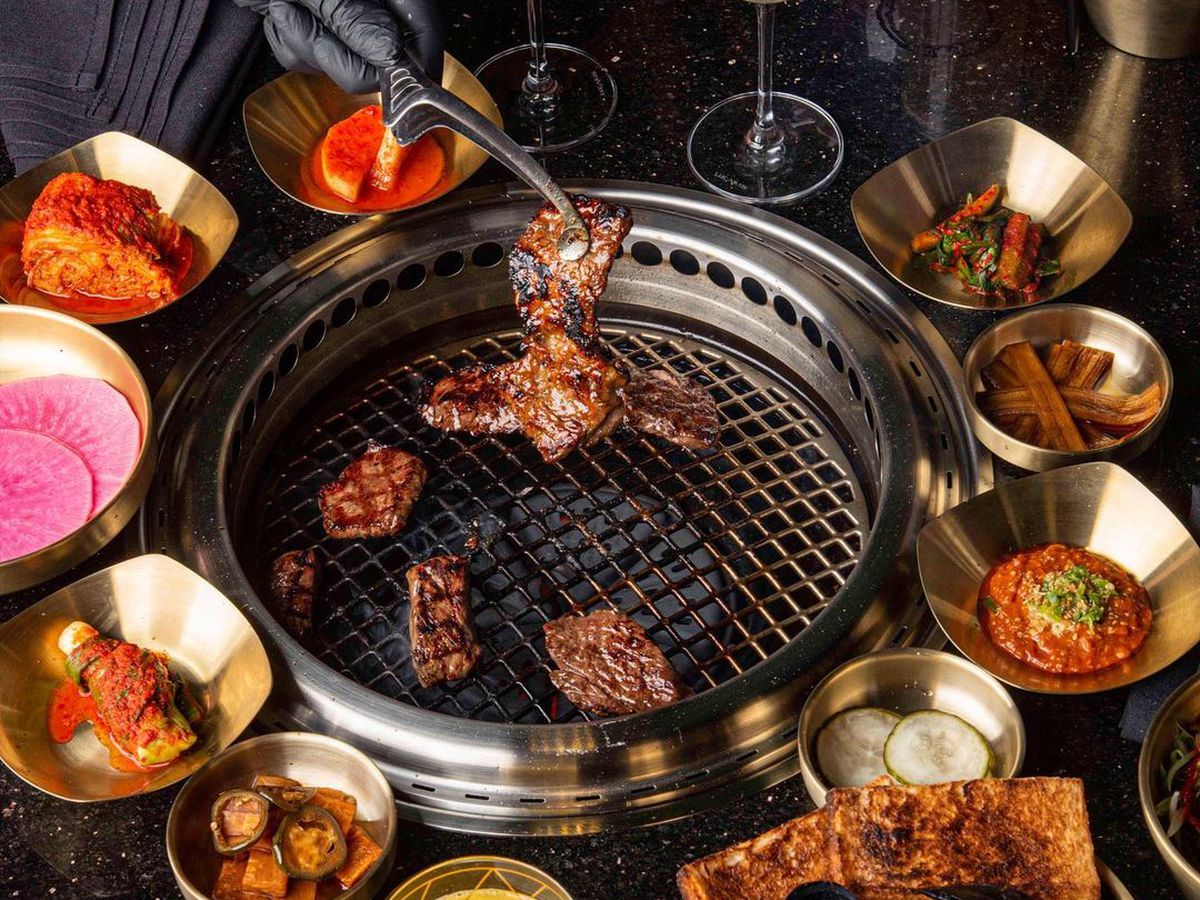A Parent’s Guide to Korean Restaurants: Embracing Culture with Kids
Hello, wonderful parents! Are you ready to embark on a delicious adventure to the land of kimchi and bibimbap with your little ones? Korean cuisine offers a delightful array of flavors that can be both a cultural eye-opener and a tastebud pleaser for your family! ?
Introduction to Korean Cuisine
Korean food is all about balance – a harmonious blend of sweet, sour, spicy, and savory that can be adjusted to suit even the most sensitive of palates. Your culinary journey at a Korean restaurant doesn’t just provide a meal; it presents an opportunity to teach your children about the rich culinary traditions of Korea.
Finding a Child-Friendly Korean Restaurant
Before setting off on your gastronomic quest, research is key. Look for Korean restaurants with a reputation for being child-friendly. This can mean they have a dedicated children’s menu, flexible spice levels, or even entertainment to keep the little ones engaged while they wait for their meal. ?
Navigating the Menu
Understanding the menu is crucial to ensuring a pleasant dining experience for everyone. Common staples include:
- Bibimbap: A colorful bowl of rice topped with assorted vegetables, beef, and a sunny-side-up egg, usually served with mild seasoning. It’s a great introduction for kiddos to Korean food.
- Japchae: Stir-fried sweet potato noodles mixed with vegetables and sometimes beef. It’s sweet, slippery fun for kids to eat!
- Bulgogi: Tender slices of marinated beef that are often grilled at the table. It’s not only delicious but also an entertaining experience for the family.
- Tteokbokki: Chewy rice cakes in a sweet and spicy sauce. This dish can be quite spicy, but many restaurants will happily adjust the heat to suit your children’s taste.
Special Dietary Needs
It’s important to communicate any dietary restrictions, such as allergies or intolerances, to the restaurant staff. Many Korean dishes contain soy and sesame, and vegetarian options may be limited, but don’t worry, most places are happy to accommodate your needs.
Tips for Dining with Kids
Going to a restaurant with children can be a bit unpredictable, but here are some tips that might help make your Korean dining experience smooth sailing:
- Meal Timing: Consider dining at off-peak hours to avoid the rush and minimize waiting times.
- Interactive Dishes: Engage your children with meals that let them have a hand in preparing them, like the Korean barbecue, where everyone can cook their own meats at the table.
- Dish Sharing: Korean cuisine is often served buffet-style, perfect for families who like to share and try a little bit of everything.
- Child-Friendly Utensils: Ask for chopsticks for kids or bring your own if your child isn’t used to them yet. Many restaurants also have forks and spoons handy.
Understanding Korean Dining Etiquette
Korean dining isn’t just about enjoying delicious foods; it’s also about embracing the customs and etiquette. Here’s a chance to teach your kids some new dining manners:
- Washing Hands: A given before any meal, but in some restaurants, you may find a basin inside the dining area for this purpose.
- Waiting to Eat: It’s customary to wait for the eldest at the table to start eating before anyone else begins – a sign of respect you can explain to your children.
- Using Utensils: Show your little ones how to use chopsticks correctly, or if they’re struggling, how to politely request a fork or spoon.
The Joyful World of Korean Desserts
And let’s not forget about dessert! Korean sweets can be a great treat after the meal — look out for patbingsu (sweet shaved ice) or hotteok (sweet syrup-filled pancakes), which are usually a hit with the kids.
As you prep for your family outing to a Korean restaurant, remember that it’s all about exploring new tastes and enjoying the moment together. Stay tuned for more detailed information on Korean dishes and creative ways to integrate this delightful cuisine into your family’s dining routine. Eat well, laugh often, and share the joy of Korean flavors with your family! ?

A Parents Guide to Korean Restaurants Embracing Culture with Kids
Hello, wonderful parents! Are you ready to embark on a delicious adventure to the land of kimchi and bibimbap with your little ones? Korean cuisine offers a delightful array of flavors that can be both a cultural eye-opener and a tastebud pleaser for your family! ?
Introduction to Korean Cuisine
Korean food is all about balance – a harmonious blend of sweet, sour, spicy, and savory that can be adjusted to suit even the most sensitive of palates. Your culinary journey at a Korean restaurant doesnt just provide a meal; it presents an opportunity to teach your children about the rich culinary traditions of Korea.
Finding a Child-Friendly Korean Restaurant
Before setting off on your gastronomic quest, research is key. Look for Korean restaurants with a reputation for being child-friendly. This can mean they have a dedicated childrens menu, flexible spice levels, or even entertainment to keep the little ones engaged while they wait for their meal. ?
Navigating the Menu
Understanding the menu is crucial to ensuring a pleasant dining experience for everyone. Common staples include:
Bibimbap: A colorful bowl of rice topped with assorted vegetables, beef, and a sunny-side-up egg, usually served with mild seasoning. Its a great introduction for kiddos to Korean food.
Japchae: Stir-fried sweet potato noodles mixed with vegetables and sometimes beef. Its sweet, slippery fun for kids to eat!
Bulgogi: Tender slices of marinated beef that are often grilled at the table. Its not only delicious but also an entertaining experience for the family.
Tteokbokki: Chewy rice cakes in a sweet and spicy sauce. This dish can be quite spicy, but many restaurants will happily adjust the heat to suit your childrens taste.
Special Dietary Needs
Its important to communicate any dietary restrictions, such as allergies or intolerances, to the restaurant staff. Many Korean dishes contain soy and sesame, and vegetarian options may be limited, but dont worry, most places are happy to accommodate your needs.
Tips for Dining with Kids
Going to a restaurant with children can be a bit unpredictable, but here are some tips that might help make your Korean dining experience smooth sailing:
Meal Timing: Consider dining at off-peak hours to avoid the rush and minimize waiting times.
Interactive Dishes: Engage your children with meals that let them have a hand in preparing them, like the Korean barbecue, where everyone can cook their own meats at the table.
Dish Sharing: Korean cuisine is often served buffet-style, perfect for families who like to share and try a little bit of everything.
Child-Friendly Utensils: Ask for chopsticks for kids or bring your own if your child isnt used to them yet. Many restaurants also have forks and spoons handy.
Understanding Korean Dining Etiquette
Korean dining isnt just about enjoying delicious foods; its also about embracing the customs and etiquette. Heres a chance to teach your kids some new dining manners:
Washing Hands: A given before any meal, but in some restaurants, you may find a basin inside the dining area for this purpose.
Waiting to Eat: Its customary to wait for the eldest at the table to start eating before anyone else begins – a sign of respect you can explain to your children.
Using Utensils: Show your little ones how to use chopsticks correctly, or if theyre struggling, how to politely request a fork or spoon.
The Joyful World of Korean Desserts
And lets not forget about dessert! Korean sweets can be a great treat after the meal — look out for patbingsu (sweet shaved ice) or hotteok (sweet syrup-filled pancakes), which are usually a hit with the kids.
As you prep for your family outing to a Korean restaurant, remember that its all about exploring new tastes and enjoying the moment together. Stay tuned for more detailed information on Korean dishes and creative ways to integrate this delightful cuisine into your familys dining routine. Eat well, laugh often, and share the joy of Korean flavors with your family! ?
For more great articles please see here. For more information see here
Disclaimer
The articles available via our website provide general information only and we strongly urge readers to exercise caution and conduct their own thorough research and fact-checking. The information presented should not be taken as absolute truth, and, to the maximum extent permitted by law, we will not be held liable for any inaccuracies or errors in the content. It is essential for individuals to independently verify and validate the information before making any decisions or taking any actions based on the articles.




